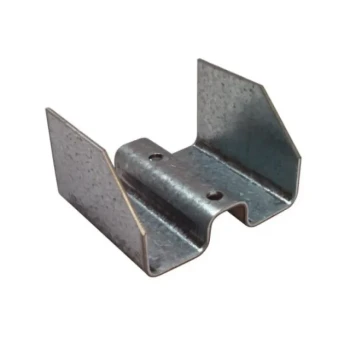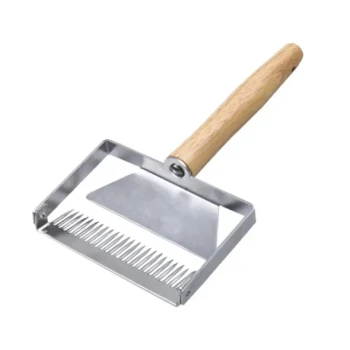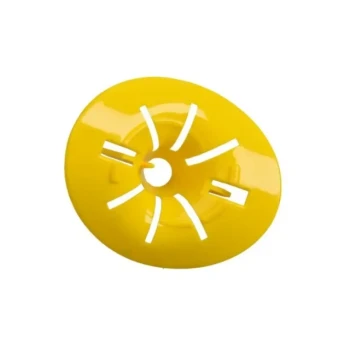The primary alternative to using a paint pen for marking a queen bee is a purpose-built numbered sticker. While paint pens are the most common method, numbered stickers are used by breeders and researchers who require precise, individual identification for tracking genetics and maintaining detailed records on valuable queens.
The choice between a paint pen and a numbered sticker is a decision between simplicity and data. While paint is easier and sufficient for most beekeepers, stickers provide a level of individual tracking that is essential for advanced breeding programs.
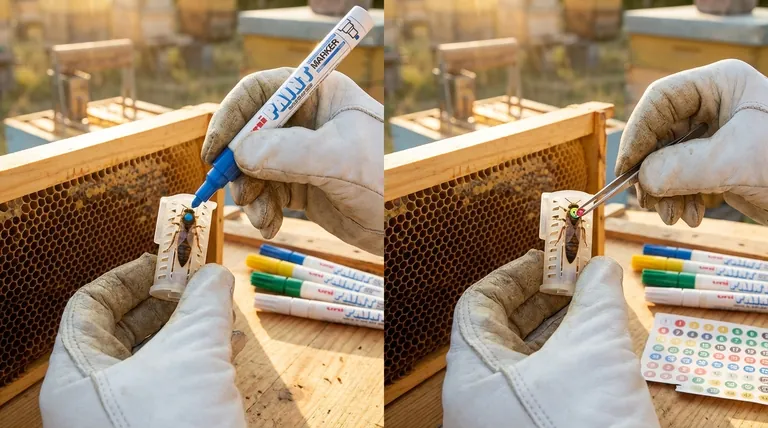
Why Mark a Queen Bee?
Marking a queen is a fundamental practice in beekeeping that provides immediate, valuable information during a hive inspection. It transforms hive management from reactive to proactive.
Instant Identification
A marked queen can be located in seconds among tens of thousands of other bees. This drastically reduces inspection time and minimizes disturbance to the colony.
Tracking Age
Beekeepers use an international color code that rotates over a five-year cycle. The color of the mark immediately tells you the year the queen was born, which is critical for knowing when she may need to be replaced.
Confirming Hive Status
Quickly spotting the queen confirms the hive is "queenright" and functioning properly. Her absence is an immediate signal that the colony may be in trouble and requires intervention.
Comparing the Marking Methods
The two main options—paint pens and numbered stickers—serve the same basic purpose but are suited for different goals and skill levels.
The Standard: Water-Based Paint Pens
The most popular tool is a water-based, non-toxic paint pen, with brands like Uni-Posca being a favorite. Their popularity stems from being safe for the bee, durable enough to last her lifetime, and relatively easy to apply.
A small, single dot of paint is placed on the queen's thorax (the middle section of her back). This method is fast and effective for applying the year's color code.
The Precision Alternative: Numbered Stickers
These are tiny, colored discs with a pre-printed number (e.g., 1-99). They are used in place of a paint dot.
This method is reserved for operations where tracking individual queens is paramount, such as in breeding programs to monitor the performance of specific genetic lines.
Understanding the Trade-offs
Neither method is perfect. The right choice depends on balancing your need for information against the complexity and risk of the application.
Paint Pens: Simplicity vs. Data
The primary advantage of a paint pen is its ease of use, especially for beginners. Applying a quick dot of paint is a simpler motor skill than placing a tiny sticker.
The downside is that it only provides general information—the year the queen was hatched. You cannot distinguish between two queens marked with the same color in the same year.
Numbered Stickers: Data vs. Difficulty
Numbered stickers offer unparalleled data precision. Each queen gets a unique ID, allowing for meticulous record-keeping on her individual performance.
However, applying a sticker is more difficult and can be more stressful for both the bee and the beekeeper. It requires more handling and a higher degree of skill to place the sticker correctly without injuring the queen.
The Critical Factor: Queen Safety
Regardless of the method, the queen's safety is the top priority. Mishandling can lead to her injury, rejection by the hive, or death.
Using a marking cage or a "push-in" cage is highly recommended. These tools gently immobilize the queen against the comb, allowing you to mark her securely without having to pick her up by hand. Always avoid getting paint or adhesive on her wings, antennae, or head.
Making the Right Choice for Your Apiary
Your goal as a beekeeper should dictate your choice of marking tool.
- If your primary focus is simplicity and confirming the queen's presence: Use a water-based paint pen and a marking cage for a fast, safe, and effective solution.
- If your primary focus is breeding or tracking specific genetics: Use numbered stickers for the precise, individual identification required for detailed record-keeping.
Ultimately, the best marking method is one that you can perform safely and confidently to improve your hive management.
Summary Table:
| Method | Best For | Key Advantage | Key Consideration |
|---|---|---|---|
| Paint Pen | General hive management, beginners | Simple, fast application for year-color coding | Only provides general information (year hatched) |
| Numbered Stickers | Breeding programs, genetic tracking | Unique ID for precise, individual queen tracking | More difficult application; requires greater skill |
Upgrade Your Apiary's Efficiency with Professional-Grade Supplies
As a commercial beekeeper or equipment distributor, precise hive management is critical to your operation's success. HONESTBEE specializes in supplying the durable, reliable beekeeping equipment you need—from marking cages to full hive systems—through our wholesale-focused operations.
Let us help you streamline your workflow and improve your record-keeping. Contact our team today to discuss your specific needs and discover how our supplies can benefit your business.
Visual Guide
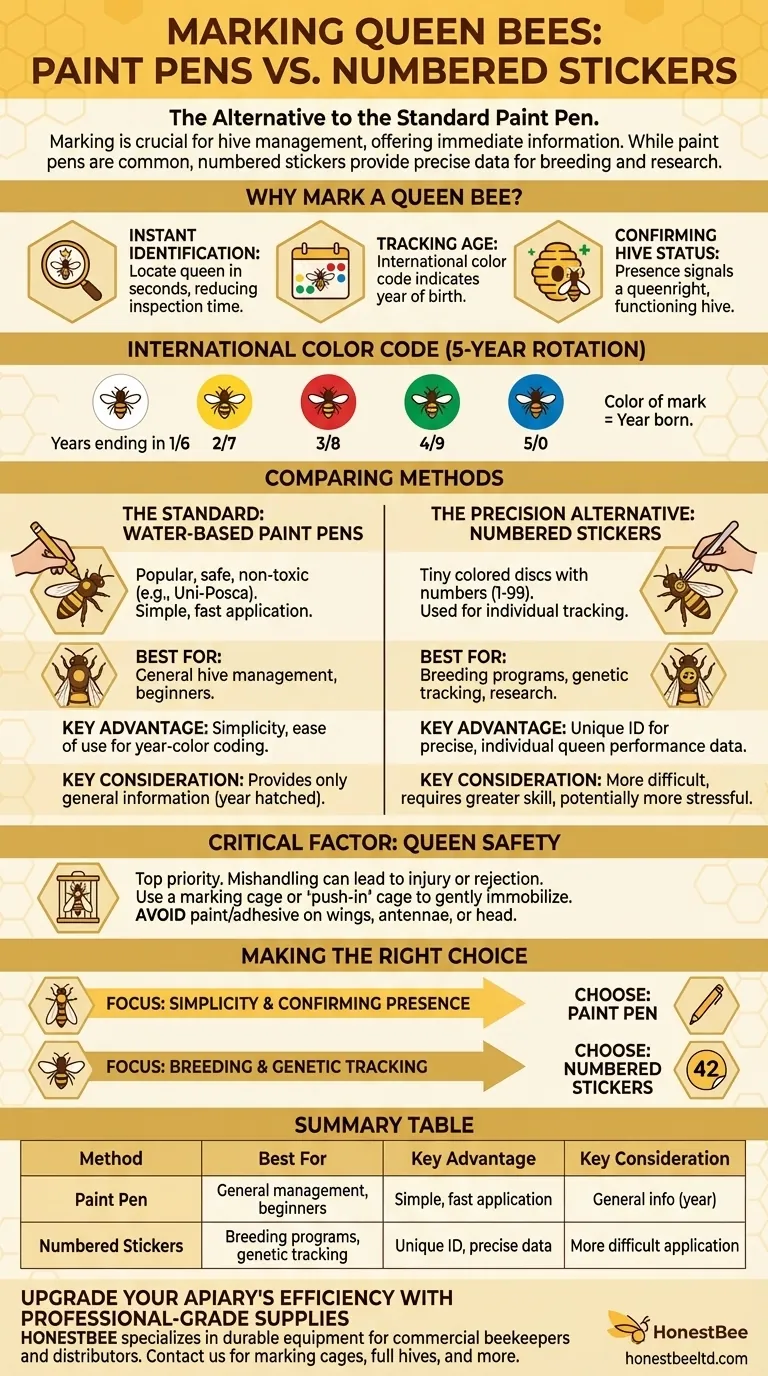
Related Products
- Queen Bee Marking Pen UNI Medium Point for Queen and Bee Marking
- Queen Bee Marking Pen POSCA Queen Marking Pens for Beekeeping Bee Markers
- Queen Bee Marking Tube Cage Bottle Catcher Holder with Clear Plastic Plunger Marker
- Heavy-Duty Galvanized Steel W-Style Pallet Clip
- Wholesales Dadant Size Wooden Bee Hives for Beekeeping
People Also Ask
- What are the characteristics of Posca pens for marking queens? A Safe, Durable Solution for Hive Management
- What type of markers are commonly used for marking Queen bees? Choose the Safe, Non-Toxic Standard
- What are the advantages of using Uni-Posca markers for Queen marking? A Safe, Precise, and Efficient Solution
- What is the purpose of a queen marking pen in beekeeping? Essential for Efficient Hive Management
- How should a Posca pen be prepared for queen marking? Ensure a Safe, Precise Mark Every Time



